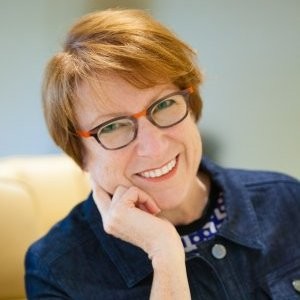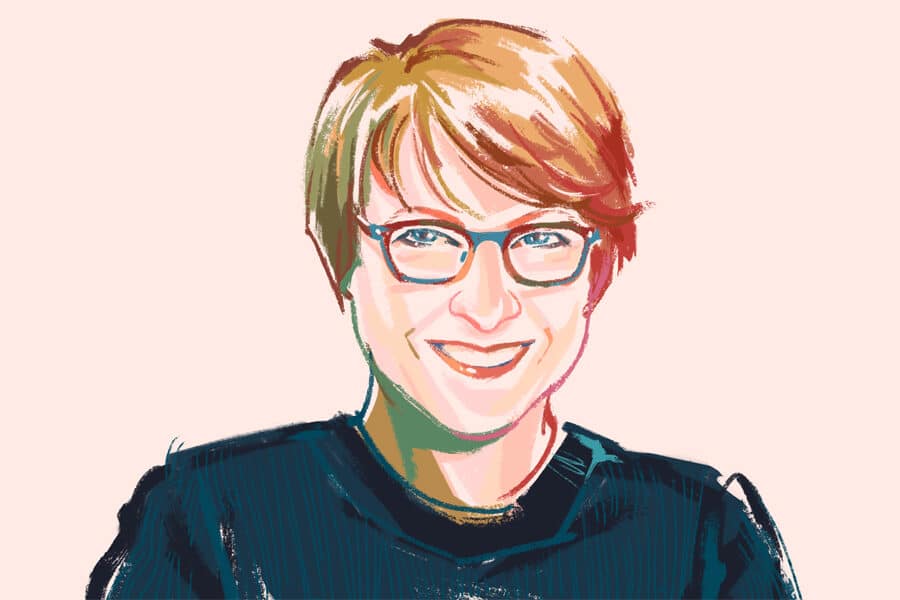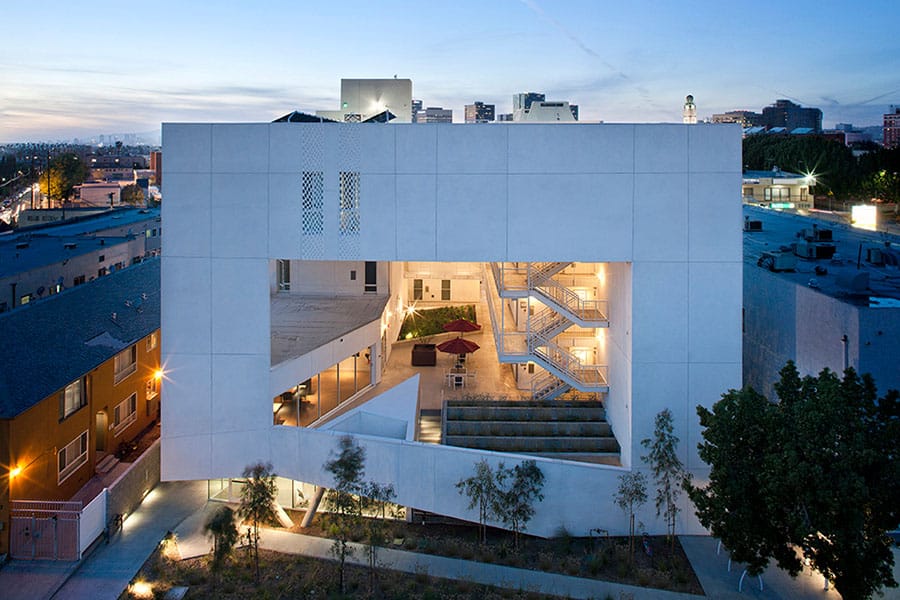Illustration by Jonny Ruzzo
“My mother was ahead of things,” said Leslie Saul, licensed architect and interior designer and president of architecture and interior design firm Leslie Saul & Associates. “She said don’t marry a doctor; be a doctor.”
Saul, who calls herself the former “artsy kid,” listened. In high school, she made earrings and sold them out of egg cartons. She went to the Rhode Island School of Design (RISD), planning to be a painting major but had a longstanding interest in architecture after reading Ayn Rand’s “The Fountainhead,” because “I thought the architect had vision.”
After growing up in Cincinnati, “which gave me that Midwestern friendly thing,” Saul spent a year in Israel “and saw so much bad architecture.”
Then, while she was in college in the 1970s, came a critical moment of practicality. “I realized I needed to support myself and maybe painting wasn’t the way to do that, so maybe architecture was,” she said.
After a foundation design class, Saul transferred to the architecture department and never looked back. But it wasn’t necessarily the most welcoming environment for women.

“Eighty people in the class, four were women and 76 were men,” Saul said. “And of that, only two people of color.” Of the four, she’s the only practicing architect. Why?
“There were two things working against them besides being female,” Saul said. “The jobs people wanted them to do were things like drawing job elevations. They couldn’t get that first job. And a lot of people that went into architecture either knew people in the field or were from wealthy families and wanted a creative career.”
“There were many jobs that were unpaid internships,” Saul continued. “One of them might have done some work. That woman ended up marrying someone wealthy and moved to Paris.”
Saul also couldn’t get a job as an architect right away, so she moved to Attleboro, Massachusetts, and worked for the planning board as she had during her summers in Cincinnati. Then she took a job at an insurance company.
“I didn’t even know my way around the building,” Saul said. “I was responsible for not only all the work inside the building, but I opened offices in field offices across the company. I learned all this stuff and was super happy.”
Eventually, Saul was designing the interior for a law office. “Then one day a lawyer there looked at me and said, ‘What are you doing here? You need to be working for an architecture firm,’” Saul said. “I said, ‘Oh, OK.’” The firm replaced her with three people.
Then a similar thing happened. Saul and her husband moved to the Boston area and started working in architecture. “I’m working on a project and there’s an architect working for the landlord, and they offered me a job,” Saul said.
On the surface, Saul’s professional progression seemed like happenstance. “Someone would say, ‘Do this or try that,’ and I’d say, ‘OK,’” she said. But talent, work ethic and an interest in doing more bubbled under the surface.
The next suggestion came from a fellow RISD alumnus to go off on her own. Saul was working at a firm and had an opportunity to create a “doghouse” as part of a project to raise money for AIDS research through an auction of the designs. She did a home for a ladybug. Her employer at the time circulated a note to say The Boston Globe wanted to publicize the auction. Suddenly, Saul was bringing publicity into the firm.
“I had a partner say, ‘This is a waste of your time,’” Saul remembered, adding that it was encouragement to open a firm of her own.
Saul did so in 1992. “People would call my old firm, ask for me and they’d say, ‘We can’t provide that information.’” Saul wanted to “do the right thing,” leave the clients behind, but they did the sleuthing and found her anyway.
Currently, Saul’s firm is in Cambridge, Massachusetts, and is 100% female—although, “We like having a token male in the firm,” she said with a laugh. What isn’t a joke is the need for a diversity of views. “Having different opinions makes things better,” she said.
Two of the people at the firm have each been there for 25 years, providing what Saul calls “design intelligence,” but what others might term experience and institutional knowledge.
“I think architects and contractors and builders need to work as team members, not as adversaries,” Saul added. “I think having more women in the field makes that more possible.”
Saul has been strongly involved with the Commercial Real Estate Women Network (CREW), which provides networking and support opportunities across the design, build, develop and financial industries. “It was really founded because the women were pretty excluded 30 years ago,” Saul said. But it does have male members. “Men wanted to join because women ran a good meeting.”
So much of the business, Saul said, is about listening to others, whether in an organizational conference, among colleagues or meeting with a client.
“What I realized is what makes architecture live is the people and helping the people get what they need for a better life,” Saul said. “You’re asking the same questions: What are the employees like? What do they need? Who are the people? What’s the space like? Where’s the sun in the morning? These are the things that matter more than the pretty pictures in the magazine.”
“If you put a sweater on the back of a chair and it ruins the design, the problem is with the design, not the sweater,” Saul added. “If real life means your space doesn’t work anymore, there’s something wrong.”
















